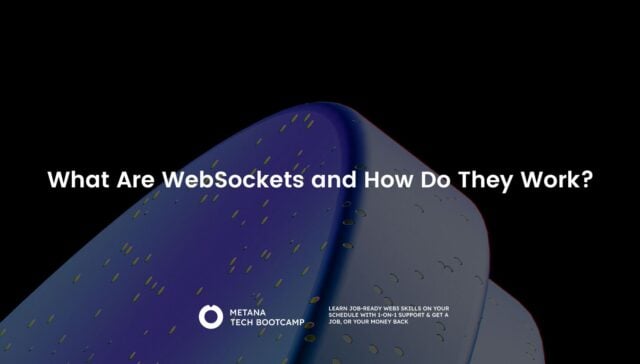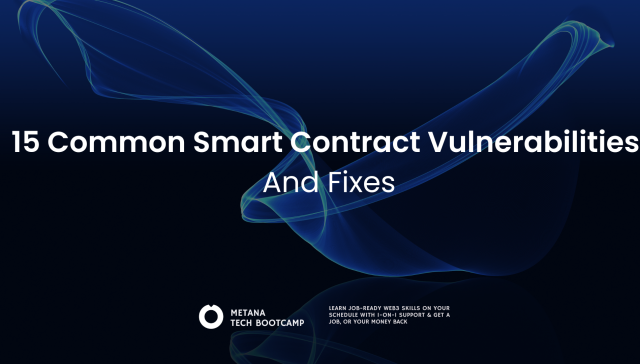Did you know 80% of internet users are concerned about their online privacy? Web3 offers a solution, built on a foundation of powerful protocols. It’s the next stage of the internet, where you control your data instead of big companies.
In this Web3 world, every user has a voice and a choice about their online presence. This shift towards user empowerment promises a safer, more private online experience for everyone. Let’s dive into the heart of Web3 and discover how it’s changing the game for digital privacy and ownership.
What are Web3 Protocols?
Web3 protocols are the foundational technologies and standards that enable the creation, operation, and interaction of decentralized applications (DApps) and services on the blockchain. These protocols form the backbone of the Web3 ecosystem, a new iteration of the web that emphasizes decentralization, privacy, and user sovereignty. Unlike traditional web technologies, which rely on centralized servers and control, Web3 protocols operate on distributed networks, primarily blockchain technology, to ensure transparency, security, and resistance to censorship.
Here are some key characteristics and functionalities of Web3 protocols:
- Decentralization: Web3 protocols operate on a decentralized network of computers or nodes, eliminating the need for central authorities or intermediaries. This ensures that no single entity has control over the entire network, enhancing security and resilience.
- Smart Contracts: Many Web3 protocols support smart contracts, which are self-executing contracts with the terms of the agreement directly written into code. Smart contracts automate transactions and enforce agreements without the need for intermediaries, enabling trustless interactions.
- Interoperability: Some Web3 protocols are designed to enable interoperability between different blockchain networks, allowing for seamless communication and exchange of assets across diverse ecosystems. This facilitates a more connected and efficient Web3 space.
- Privacy and Security: Web3 protocols often incorporate advanced cryptographic techniques to secure data and transactions on the network. Privacy features are also integrated, allowing users to control their data and identity.
- Tokenization: Tokenization is a common feature in Web3 protocols, enabling the digital representation of assets on the blockchain. This includes cryptocurrencies, utility tokens, and non-fungible tokens (NFTs), which can represent ownership or access rights within the Web3 ecosystem.
- Consensus Mechanisms: Web3 protocols utilize various consensus mechanisms (such as Proof of Work, Proof of Stake, and others) to validate transactions and secure the network. These mechanisms ensure that all participants agree on the state of the blockchain without needing a central authority.
- Permissionless: Most Web3 protocols are permissionless, meaning anyone can participate in the network, use the protocol, or develop applications on top of it without requiring permission from a governing body.
Examples of Web3 protocols include Ethereum for smart contracts and DApps, IPFS (InterPlanetary File System) for decentralized file storage, Chainlink for decentralized oracles connecting smart contracts with real-world data, and Polkadot or Cosmos for blockchain interoperability.
In essence, Web3 protocols are the building blocks of a decentralized internet, offering a new paradigm for digital interactions, financial transactions, and online governance, with a strong emphasis on user control, privacy, and interoperability.

10 Web3 Protocols
Ethereum (ETH)
Ethereum is widely recognized as a pioneer in smart contract technology, providing a robust platform for developers to create decentralized applications (DApps). Its significance in the Web3 ecosystem cannot be overstated, as it serves as the backbone for a diverse range of applications, from decentralized finance (DeFi) to gaming and social media. Ethereum’s smart contracts automate transactions and agreements, eliminating the need for intermediaries and enabling a new level of programmable, trustless interactions. This has opened up a world of possibilities for innovation, making Ethereum the go-to platform for developers looking to build on the decentralized web.
InterPlanetary File System (IPFS)
The InterPlanetary File System, or IPFS, is transforming how we store and access information on the internet. By creating a distributed network of nodes, IPFS allows for the decentralized storage and sharing of files. This approach not only makes the web faster and more efficient but also more resilient to censorship. Unlike traditional web hosting, where files reside on a single server, IPFS ensures that content is stored across multiple nodes, enhancing accessibility and reliability. The protocol is instrumental in paving the way for a more open and decentralized internet, where information remains freely accessible to everyone.
Filecoin (FIL)
Building on the decentralized storage capabilities of IPFS, Filecoin introduces an incentivization layer that rewards users for storing and sharing their digital space. This decentralized storage network turns the concept of cloud storage on its head, making it more efficient and cost-effective. Users can rent out unused storage space or purchase storage, creating a market for data storage that is not controlled by any single entity. Filecoin’s approach ensures that data is not only stored securely but also remains accessible over time, offering a compelling alternative to traditional cloud storage services.
Chainlink (LINK)
Chainlink addresses a critical need in the blockchain space: the ability to securely interact with external data and systems. As a decentralized oracle network, Chainlink enables smart contracts to access real-world data, bridging the gap between blockchains and traditional data sources. This capability is vital for many applications, from DeFi platforms that rely on accurate price feeds to insurance contracts that pay out based on real-world events. Chainlink’s technology ensures that this data is tamper-proof and reliable, providing a key piece of infrastructure for complex smart contracts.
Polkadot (DOT)
Polkadot represents a significant advancement in blockchain interoperability and scalability. Its unique parachain architecture allows multiple blockchains to operate under a single network, enabling them to share features and security. This design facilitates the transfer of data and assets across previously siloed blockchains, opening up new possibilities for cross-chain applications and services. Polkadot’s approach not only enhances interoperability but also provides the scalability needed for widespread adoption of blockchain technology.
Cosmos (ATOM)
Cosmos, known as the “Internet of Blockchains,” is designed to enable different blockchain networks to communicate and transact with one another in a decentralized manner. By providing a framework for interoperability and scalability, Cosmos allows for the creation of a network of blockchains that can operate independently yet share information seamlessly. This capability is crucial for creating a more cohesive and powerful decentralized ecosystem, where various blockchains can leverage each other’s strengths.
Avalanche (AVAX)
Avalanche stands out for its emphasis on scalability and speed, offering a blockchain platform that supports decentralized applications and custom blockchain networks with low latency and high throughput. Its consensus mechanism is designed to facilitate fast and cost-effective transactions, making it an attractive platform for DeFi applications and other uses that require quick and reliable processing. Avalanche’s ability to create custom subnets also provides a level of customization and flexibility that is appealing for a wide range of blockchain-based projects.
The Graph (GRT)
The Graph is revolutionizing how data is accessed from blockchains, making it easier for developers to build and run DApps. By providing tools for indexing and querying blockchain data, The Graph enables applications to perform more complex and efficient data retrievals. This capability is essential for creating user-friendly and powerful DApps, as it improves the speed and relevancy of the data presented to users. The decentralized nature of The Graph also ensures that this data remains open and accessible, supporting a more transparent and user-centric web.
Aragon (ANT)
Aragon is at the forefront of decentralized organization and governance, offering tools and infrastructure for managing decentralized autonomous organizations (DAOs). With Aragon, communities and projects can govern themselves without centralized control, making decisions through transparent and democratic processes. This platform not only facilitates decentralized decision-making but also provides a model for organization and collaboration that could redefine how companies and communities operate in the future.
Decentraland (MANA)
Decentraland is a virtual reality platform that leverages the Ethereum blockchain to give users full control over their creations and interactions in a digital world. This decentralized virtual reality space allows users to create, experience, and monetize content and applications, from games to digital art galleries. By enabling true ownership of digital assets and land, Decentraland offers a new dimension of online interaction and economy, where users are the architects of their own experiences.
Each of these Web3 protocols plays a vital role in shaping the decentralized landscape, offering unique solutions and opportunities for users and developers alike. Together, they form the backbone of a new digital ecosystem that is more open, secure, and user-centric.
What are the Benefits of Web3 Protocols?
In the ever-evolving landscape of web technologies, Web3 protocols stand out as powerful enablers of a decentralized and secure online ecosystem. These protocols offer a wide array of benefits, from fostering interoperability and enhancing security to providing financial incentives for entrepreneurs. By harnessing the potential of Web3 protocols, the internet is poised to undergo a transformative shift towards a more decentralized, privacy-focused, and inclusive digital environment.
Interoperability, Security, and Privacy
Web3 protocols facilitate decentralized data sharing and communication, paving the way for enhanced interoperability across diverse systems and organizations. Their decentralized nature also bolsters security by minimizing the risk of single points of failure, thereby reducing vulnerabilities. Moreover, these protocols empower users with greater control over their data and online interactions, promoting a heightened level of privacy and autonomy.
Incentives for Entrepreneurs
Entrepreneurs are presented with compelling incentives within the decentralized network facilitated by Web3 protocols. The rewards stemming from permissionless protocols serve as catalysts for entrepreneurial innovation, fostering a vibrant ecosystem of creators and contributors.
Financial Incentives and Decentralization
Cryptocurrency, an integral component of many Web3 protocols, plays a pivotal role in providing financial incentives (in the form of tokens) to participants who contribute to the development and governance of projects. This decentralized approach not only offers individuals the opportunity to derive livelihood from their involvement but also empowers a diverse array of technical and non-technical contributors.
As the internet continues to evolve, the benefits of Web3 protocols are poised to shape the future of digital interaction, paving the way for a decentralized and equitable online environment where users wield greater control over their data and interactions.
Conclusion
Web3 is transforming the internet with decentralization, empowering users with control over their data and creating a secure, transparent online world. It’s an open invitation to explore and shape this new digital era. Dive into Web3, where innovation, inclusivity, and interoperability pave the way for a connected and user-driven future. Join the movement towards a decentralized web and be part of the revolution. Let’s build a better internet together.
FAQs
What are Web3 protocols?
- Web3 protocols refer to the foundational technologies and standards powering the decentralized web, emphasizing user sovereignty, data security, and peer-to-peer interactions.
How do Web3 protocols differ from traditional web technologies?
- Unlike the centralized structures of the traditional web, Web3 protocols operate on a decentralized network, offering increased privacy, security, and control over data to users.
What role does blockchain play in Web3 protocols?
- Blockchain is central to Web3, providing a secure, transparent, and immutable ledger for transactions and data storage, enabling trustless interactions and smart contracts.
Can Web3 protocols impact online privacy and security?
- Yes, by leveraging encryption and decentralization, Web3 protocols significantly enhance online privacy and security, reducing the risk of data breaches and unauthorized access.
What are some applications of Web3 protocols?
- Applications include decentralized finance (DeFi), non-fungible tokens (NFTs), decentralized autonomous organizations (DAOs), and more, all aiming to revolutionize how we interact online.
What is the significance of smart contracts in Web3?
- Smart contracts automate and enforce agreements on the blockchain, facilitating trustless transactions and applications without intermediaries.
How can one participate in the Web3 ecosystem?
- Participation involves using cryptocurrencies, engaging with decentralized applications (DApps), and contributing to decentralized networks and governance.
What challenges does Web3 face in widespread adoption?
- Challenges include scalability, user experience, regulatory hurdles, and the need for greater public understanding of blockchain technology.
How does decentralization benefit digital ownership?
- Decentralization ensures users have true ownership and control over their digital assets, such as cryptocurrencies and NFTs, without reliance on centralized entities.
What future developments can we expect from Web3?
- Future developments may include enhanced scalability, more intuitive user interfaces, increased regulatory clarity, and broader integration with traditional industries.





